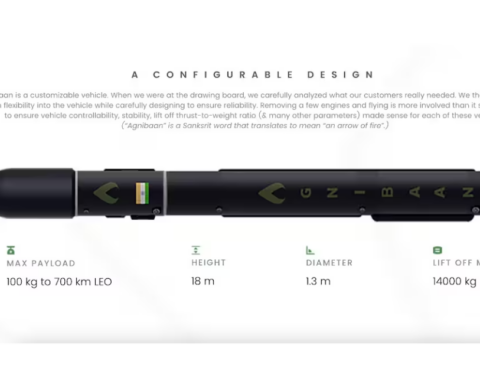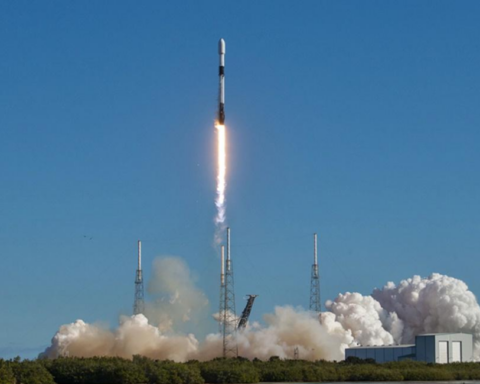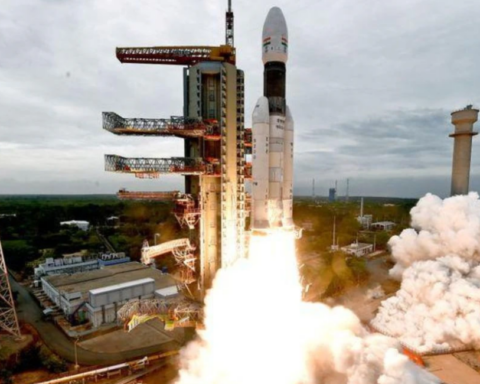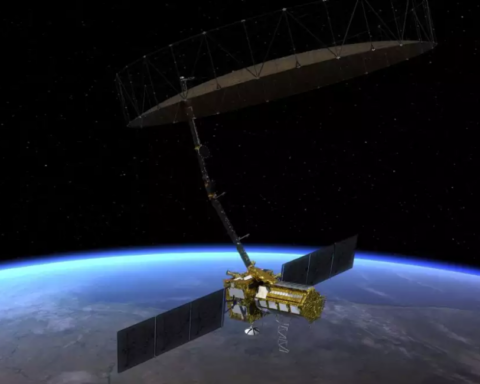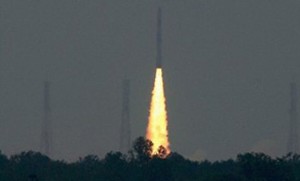 In a landmark late night journey into a new era of space application, India today successfully launched its first dedicated navigation satellite using the Polar Satellite Launch Vehicle which blasted off from the Satish Dhawan Space Centre here.
In a landmark late night journey into a new era of space application, India today successfully launched its first dedicated navigation satellite using the Polar Satellite Launch Vehicle which blasted off from the Satish Dhawan Space Centre here.
Precisely at 11.41 pm, India’s workhorse PSLV C22 lifted off in a perfect text book launch, carrying IRNSS-1A satellite, painting a dense golden flame in the dark canvas of the sky.
About 20 minutes after its launch, the rocket placed into the IRNSS-1A into its orbit.
An elated ISRO chairman K Radhakrishnan said the IRNSS-1A satellite was precisely injected into its intended orbit.
“This only proves that PSLV is an extremely reliable vehicle and with this flight, we are also entering into a new era of space application in the country that is the beginning of satellite navigation programme.”
The data from the satellite would help the country in a range of fields including disaster management, vehicle tracking, fleet management and marine navigation.
Developed by India, the IRNSS-1A, the first of the 7 satellites constituting the Indian Regional Navigation Satellite System (IRNSS) space segment, has a mission life of 10 years.
It is designed to provide accurate position information service to users in the country as well as the region extending up to 1,500 km from its boundary,which is its
primary service area. IRNSS will be on lines with Russia’s Global Orbiting Navigation Satellite System (GLONASS), United States’ Global Positioning System (GPS), European Union’s Galileo (GNSS), China’s BeiDou satellite navigation system and the Quasi-Zenith Satellite System.
“I am extremely happy to announce that we had another excellent flight of our PSLV vehicle. This is the 23rd successive successful flight of PSLV and the fourth successful flight of extended version of PSLV,” Radhakrishnan said.
The navigational system would provide two types of services –Standard Positioning Service, which is provided to all the users and Restricted Service, which is an encrypted service provided only to the authorised users.


